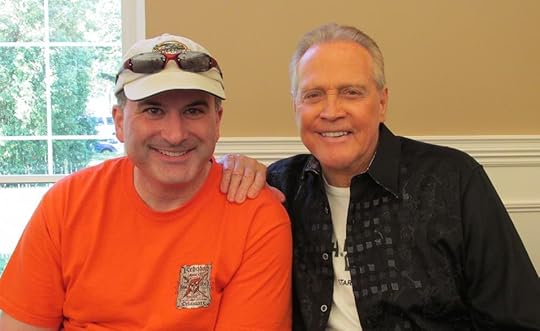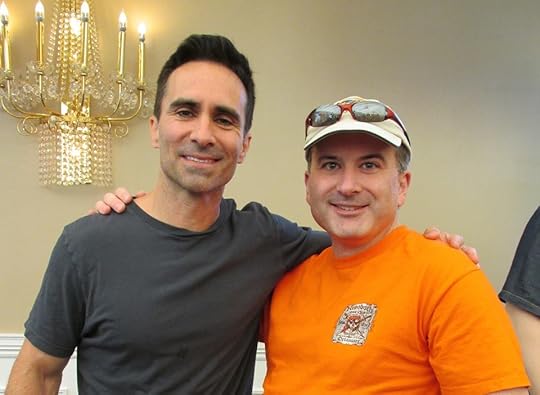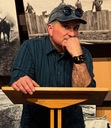Phil Giunta's Blog, page 60
September 29, 2016
Hold Onto the Light Inside of You
This morning, I learned about a brilliant initiative called Hold Onto The Light, spearheaded by SFF author Gail Z. Martin.
Beginning on September 20, hundreds of science fiction and fantasy authors began an online conversation across blogs and social media about mental illness, domestic violence, suicide, depression, PTSD, and related issues that are often extremely upsetting
media about mental illness, domestic violence, suicide, depression, PTSD, and related issues that are often extremely upsetting
and difficult to discuss for so many.
Click here to read the first blog post from Hold Onto The Light.
Over the past five years, I’ve opened up about my nearly 40-year battle with depression both on social media and at personal appearances. I sometimes discuss how depression has affected my writing and I never cease to be surprised at how willing others are to reveal their own struggles. My, times have changed. Society is finally opening up a dialogue about mental illness and that’s wonderful. The old stigmas are rapidly disintegrating.
My first novel, Testing the Prisoner, is a paranormal mystery that deals with the brutality of child abuse and the trauma that stays with the victims for the rest of their lives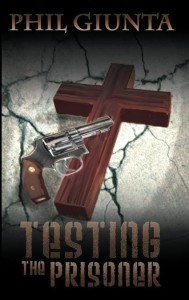 . This was intimately familiar territory, but that made it no less challenging to write. I had to confront my own pain, my own memories, my own struggles with a darkness that pushed me toward a desire to take my own life at least a half dozen times during my younger days and even a few times in recent years.
. This was intimately familiar territory, but that made it no less challenging to write. I had to confront my own pain, my own memories, my own struggles with a darkness that pushed me toward a desire to take my own life at least a half dozen times during my younger days and even a few times in recent years.
Still, I knew the story had to be told for a number of reasons. First, I wanted to let others who have been victims of child abuse to know that they are not alone. Secondly, and perhaps more selfishly, I wanted to turn the tables on a demon that has persistently robbed me of happiness and instead, use it as a storytelling tool to launch my writing career.
As for surviving depression, perhaps it was faith, willpower, or a hope for a brighter future that dissuaded me from any “permanent solutions” to my problem. Much of the credit should also be given to SFF fandom and my growing interest in writing. Watching Star Trek and seeing Star Wars at the tender age of six inspired me. Later, the media tie-in novels became a gateway to speculative fiction and hard SF in my teen years. I began reading Asimov, Clarke, Ellison, Bradbury, and many others. Like many SF films and TV shows, books became my anti-depressant and while they were not an instant panacea, they helped pull me through countless dark and terrible times. They still do today.
Most importantly, the friendship and community that I found in SFF fandom has been the most enriching experience I could ask for. The best and most supportive friends in my life came from my three decades attending SF conventions such as Farpoint, Shore Leave, Balticon, and others.
More, I wouldn’t be published today were it not for the mentorship of august writers like Steven H. Wilson, Howard Weinstein, Michael Jan Friedman, Bob Greenberger, and Aaron Rosenberg, all of whom I met at the aforementioned cons. I am honored to call these chaps my friends, and in the case of Steve, Bob, and Aaron, my publishers!
If you are suffering from depression, I encourage you to reach out and find the help you so richly deserve. You are not alone. You have a right to happiness and health. You have a right to achieve your potential without being hagridden by a demon that wants to convince you of the lie that you’re inadequate, unworthy, or that life is not worth living. I beg you to find the light and hold onto it.
About Hold Onto The Light
September/October are the months for Depression Awareness, Suicide Prevention, Bullying Prevention, Traumatic Brain Injury Awareness, World Mental Health Day and Domestic Violence Awareness.
What’s our end game? We want to bring the issues, struggle and treatment out of the shadows and make it clear that no one is alone in the journey. We want to demonstrate fandom taking care of its own. And we want fandom to be a safe space for everyone.
The steering group behind #HoldOnTotheLight is made up of John Hartness, Jaym Gates, Jean Marie Ward, Emily Leverett, Mindy Mymudes and me.
How can you help? Share, retweet and engage with the blog posts and social media outreach about the campaign and by the participating authors to spread the word. Encourage the conventions you participate in to add or expand panels on mental wellness. Learn more about the issues, so you can be an educated participant in the discussion.
If you want to get even more hands-on, please consider donating to or volunteering for organizations dedicated to treatment and prevention such as: American Foundation for Suicide Prevention, Hope for the Warriors (PTSD), National Alliance on Mental Illness (NAMI), Canadian Mental Health Association, MIND (UK), SANE (UK), BeyondBlue (Australia), To Write Love On Her Arms (TWLOHA) and the National Suicide Prevention Hotline.
Together, we can #HoldOnToTheLight because #FandomTakesCareOfItsOwn.
You can find updates with links to author blog posts and updates about related news here, and on the HoldOnToTheLight Facebook group https://www.facebook.com/groups/276745236033627/ and on our Facebook page www.facebook.com/WeHoldOnToTheLight (note the ‘we’)
Media: Contact Gail Z. Martin via www.AscendantKingdoms.com
September 28, 2016
Book Review: Peter Benchley’s JAWS
Typically, my book reviews provide a brief synopsis of the first half of the story and end with such questions as “Will the detective solve the murder?” or “Will the heroes accomplish _____ in time to save ____?”
In the case of JAWS, do I really need to do that? Well, believe it or not, I know a few people who have never seen the film. For them, I shall summarize.
A great white shark has staked a claim in the waters just off the shore of Amity, a fictional beach town on Long Island, NY. Despite pressure from Mayor Larry Vaughn and the selectmen of the town council, Police Chief Martin Brody closes the beaches after the shark kills three swimmers including twenty-something Christine Watkins, a young boy named Alex Kintner, and a 60-year-old man.
Harry Meadows, editor-in-chief of the town newspaper, recruits an ichthyologist named Matt Hooper from the Woods Hole Oceanographic Institute to assist in investigating the incidents. Meanwhile, local fisherman Ben Gardner is hired to catch the shark. Later, his boat is found abandoned a few miles offshore, but Gardner is never seen again.
Hooper borrows Gardner’s boat to patrol the waters in search of the shark and at one point after Brody reopens the beaches, another young boy narrowly escapes the shark while Hooper tracks it toward shore.
During this crisis, Amity’s economy declines rapidly. Summer home rentals are down, businesses suffer, and Mayor Larry Vaughn is unable to pay his “business partners” aka the Mafia. All the while, Chief Brody begins to suspect that his wife, Ellen, might have had an affair with Hooper not long after they met.
Finally, Meadows recommends that Brody hire a local shark fisherman named Quint to hunt down and kill the shark. Despite Hooper’s objections, Brody makes the call. Quint agrees, but doubles his fee. Brody and Hooper join Quint on an expedition that takes place over several days. Finally, after the second or third day, the shark reveals itself but eludes Quint’s harpoons. Surprised by the shark’s intelligence, Quint and Hooper try different tactics to bring the shark in closer for the kill—but will their efforts prove fatal to themselves as well as the shark?
I had not read JAWS in probably 25 years and had forgotten just how disappointing the novel is compared to the film, which I’ve seen well over 200 times by now and can quote almost verbatim. With possible exception of Chief Brody, none of the characters in the book are likable. They range from the annoying and vain (Ellen Brody) to the callous (Quint, Meadows, even Chief Brody and Hooper at times) and despicable (Vaughn). There is absolutely no character development at all, and I can see why, while reading the novel back in 1974, Steven Spielberg said that he was rooting for the shark to win.
Overall, the narrative and dialogue are lackluster, but the descriptions of the shark attacks and the final showdown in the last two chapters are compelling. Some chapters ended in brief vignettes that are completely unrelated to the plot, but were intended to show the dire effects of the shark’s presence near Amity. I found these to be unnecessary and distracting.
Without spoiling the novel, I would like to point out just some differences between the book and the film since the latter contained over 20 scenes that were not in the Benchley’s original story.
At the behest of Spielberg, the characters as depicted in the film were far more affable. The subplot of the mayor’s ties to the Mafia was eliminated, as was Ellen Brody’s familiarity with Matt Hooper.
In the novel, it’s Hooper who does most of the chumming aboard the Orca, not Brody, and at the end of each day, Quint brings the boat back to port. He sees no need to remain on the water overnight, as was done in the film. Chief Brody never says the famous line, “You’re gonna need a bigger boat,” and Quint never addressed the citizens at the town hall meeting, nor was he a survivor of the USS Indianapolis.
Also, the Brodys’ three kids are barely featured in the novel, and even then, only at home. That wonderfully tense scene of the shark attacking the sailboat in the “pond” and knocking Brody’s oldest son into the water was created strictly for the film.
There are many other differences, surrounding Hooper and the fate of the shark, but I’m done telling this fish story!
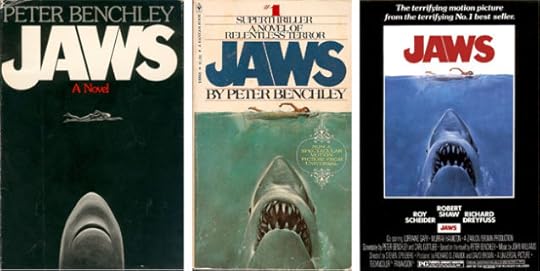
October Signing at Moravian Book Shop!
In addition to myself, fellow anthology authors Melissa Carta Miller, Stuart Roth, and Susanna Reilly will be there to sign copies of volumes one and two of our Middle of Eternity speculative fiction series.
We appreciate your support of independent and small press authors!
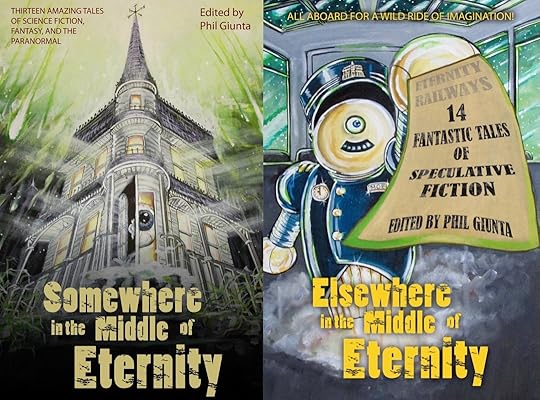
September 18, 2016
Book Review: The Machineries of Joy by Ray Bradbury
As usual, Ray Bradbury writes in splendid imagery, his prose poetic. No one else wrote, or will ever write, like Bradbury.
Yet, I fear most of today’s editors would likely slash and gut much of his beautiful detail, carving the very heart from his work. Such are the changes in readers’ tastes, which I partly blame on the dumbing down of society.
The Machineries of Joy was, not surprisingly, a joy to read. Of the 21 brilliant stories included, my favorites were:
“Tyrannosaurus Rex” — A stop-motion animator, tasked with creating a miniature T-Rex, just cannot seem to satisfy a film producer—until he completely recreates the beast’s face to resemble someone very familiar.
“The Vacation”— Traveling atop a small four-wheeled workman’s railcar, a family of three takes a serene cross-country excursion, able to avoid the rest of humanity—because they are the last people on Earth.
“Boys! Raise Giant Mushrooms in your Cellar!”— Inspired by an ad in Popular Mechanics, a boy sends away for a kit to grow mushrooms in his parents’ cellar, something that seems to be catching on across the country. However, it isn’t long before alarming behavior begins to manifest in those who eat the mushrooms.
“Almost The End Of The World” — Two miners return home to regale the locals with yet more tall tales of adventure only to find their town completely changed. Everything is freshly painted from homes to shops to flower pots—and the locals suddenly prohibit the miners from uttering a word.
“And The Sailor, Home From The Sea” — A dying sea captain and widower, now living on a wheat farm far from the ocean, asks his caretaker to bury him at sea where he lost his wife so many years ago. When the time comes, the caretaker follows through—without ever leaving the farm.
“A Miracle of Rare Device” — Two schemers always looking for a fast buck discover a mirage in the New Mexico desert that appears to be New York City! They begin selling tickets to passersby, only to learn that each person sees something completely different—and life altering—in the trick of light and heat.
“And So Died Riabouchinska” — A detective investigating a murder questions a ventriloquist, but only learns the truth through the man’s exquisite Russian female puppet.
“Death and the Maiden” — Old Mam, or so the townsfolk call her, locked herself in her house decades ago, fearing the day when Death would come for her. She receives no visitors save for a grocery clerk who merely delivers food to her porch once every few weeks. When Death finally arrives, he tempts Old Mam with an unexpected offer.
“To The Chicago Abyss” — A homeless man who remembers what life on Earth was like before Annihilation Day is saved from a beating on the street by the member of a secret movement that wishes to return to the days of old. The homeless man’s reputation has fallen under the scrutiny of the authorities so the movement’s followers send the homeless man to a place of safety, but not before he imparts his knowledge to them.
“The Anthem Sprinters” — In Dublin, a group of Irishman place bets on who can run out of the cinema the fastest after a movie, in order to avoid listening to Ireland’s national anthem, which is played after the end of every film. When an American tourist is convinced to ante up and join the fun, he finds that even this callous group has a heart of gold.
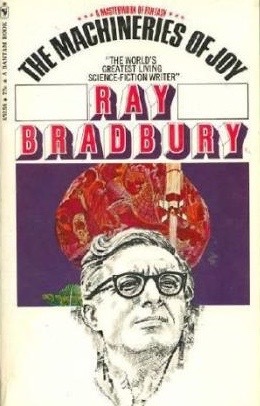
September 17, 2016
The View From On High: The WWII Towers of Delaware
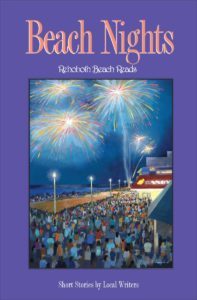 In case you missed my other five or six posts about the Rehoboth Beach Reads short story contest, my paranormal tale, “Tower 16” took second place and will be published in the anthology, Beach Nights, coming in November from Cat and Mouse Press.
In case you missed my other five or six posts about the Rehoboth Beach Reads short story contest, my paranormal tale, “Tower 16” took second place and will be published in the anthology, Beach Nights, coming in November from Cat and Mouse Press.
In fact, the book launch is scheduled for November 13, 2-4PM, at Browseabout Books on Rehoboth Avenue.
My story focuses on lonely WWII veteran and Rehoboth Beach resident Reggie Prell and his doting granddaughter, Hannah, who is visiting him during summer vacation with her parents. In between regaling Hannah with stories of his army career, Reggie is confronted by the ghosts of his brothers-in-arms, all of whom have passed away over the years leaving Reggie the lone surviving member of his battery. Realizing that his end is near, Reggie reveals to Hannah the legend of Tower 16—which only materializes to claim the souls of those who served in the fire control towers along Delaware’s coast. Will Tower 16 come for Reggie next?
I was told by the editor of the anthology that my story actually made one of the judges cry. I know it certainly moved me as I wrote it.
So What Is This Tower You Keep Referring To?
I’ve been fascinated by the WWII fire control towers along Delaware’s coast for years and always wanted to write a story about them, but it was not until the Beach Nights contest was announced that an idea finally came to me.
After all, tell a paranormal fiction writer that you’re looking for stories that take place at night and whaddaya expect to get?
My connection to Rehoboth Beach seems to s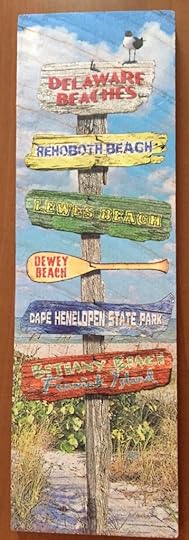 trengthen each year. I was married there, and as I write this, I am back in town with my wife as we celebrate our anniversary.
trengthen each year. I was married there, and as I write this, I am back in town with my wife as we celebrate our anniversary.
For the past four summers, she and I have rented a house for a week every July with friends, and we take the occasional day trip here as our schedules permit.
When at all possible, I also try to include a visit to Tower 7 in Cape Henlopen. It is the only tower open to the public at present, but there is a growing movement to restore and open some of the others.
This past July, I had the pleasure of visiting Tower 3 near Dewey Beach, which I’d spotted earlier in the day during a parasailing excursion.
Of course, trips to the beach wouldn’t be complete wi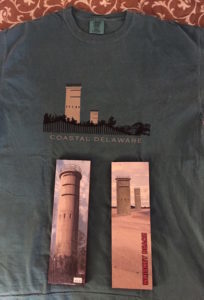 thout stimulating the local economy. This time, I finally bought a few tower-themed goodies from the local shops, including a t-shirt and two wooden plaques as pictured here.
thout stimulating the local economy. This time, I finally bought a few tower-themed goodies from the local shops, including a t-shirt and two wooden plaques as pictured here.
Below are several pictures taken not only of the tower in Cape Henlopen, but images of the ocean, the bay, and surrounding park taken by me from the very top of the tower.
The Purpose of the Towers

The Fire Control Towers were constructed by the US Army in the early days of WWII to protect the Delaware Bay from potential incursion by German vessels.
There were 11 total concrete towers built between Cape Henlopen and Bethany Beach. Across the bay in New Jersey, two were built in Cape May and still exist, while the pair in Wildwood have been demolished.
Further north in Delaware, five metal towers were raised in Fort Saulsbury, but only one remains at Big Stone Beach as shown below. Photo credit: http://www.fortsaulsburyde.com

The towers were mostly constructed in pairs in order to triangulate the position of enemy ships. The information would then be transmitted back to the gun crews.
Cape Henlopen was also the location of Fort Miles army base. Today, the base remains as a tourist attraction with many of the large caliber guns on display alongside the buildings as shown below.




Below: From the top of Tower 7, views of Delaware Bay, Atlantic Ocean, and Tower 12 in Cape Henlopen State Park.




Below: Tower 7 in Cape Henlopen State Park on a perfect summer day.

References:
Beach Nights Launch Party!
The official word is out!
The launch party for the Beach Nights anthology will be Sunday, November 13, 2-4pm at Browseabout Books in Re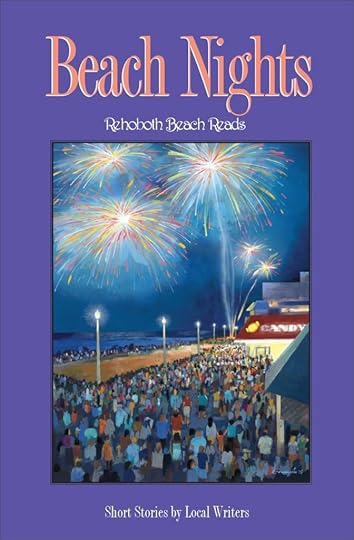 hoboth Beach, DE.
hoboth Beach, DE.
We will have wine, cake, free raffles, and authors on hand to sign your copy!
My story, “Tower 16” took second place and $250 in the contest at the end of July. It will be among 24 stories published in the collection.
The final layout was sent to the authors earlier this week for review before going to press. Exciting times!

September 2, 2016
Can Being an IT Geek Benefit Your Fiction Writing?
Shortly after my first novel was published in 2010, one of my co-workers asked me about it while I was installing and configuring his new laptop. The president of our division at the time happened by and overheard the conversation. “I thought you were just a boring IT guy,” he remarked.
Perhaps I am—and that’s fine with me—but as I recalled this memory recently, it occurred to me just how much my 23 years in IT support might have have benefited my fiction writing, as contradictory as that might seem on the surface. Really, it’s all about balancing the skills dominated by each side of the brain. Research suggests that the left brain controls reading and writing, calculation, and logical thinking while the right brain controls three-dimensional sense, creativity, and artistic senses.
Plan the Work, then Work the Plan…but also Be Organic
When it comes to approach, I realize there are two schools of thought—namely “plotters” vs. “pantsers”. The former are those writers who outline their stories in advance, thus creating a road map that plots a course from the beginning through middle to the end and everything in between. The latter group are those who have a fairly solid idea of how their story will proceed, but prefer not to
plan too much, thus writing by the “seat of their pants.”
With few exceptions (such as flash fiction and some short stories), I’m an ardent plotter. Working in the corporate world of project plans that show a logical progression from beginning to end,
with milestone goals along the way, is not much different from outlining a story.
Your outline is your plan that allows you plot a course through your story arc, including your characters’ journeys (protagonist, antagonist, and major supporting characters) and specifying key plot points (milestones) such as the inciting incident, scenes-and-sequels, the moment of change when your protagonist must stand up/step up/adjust attitude to overcome the major problem, and more.
However, writing fiction is an organic process and I have been known to take detours from my outlines if a better idea comes along while writing the story. That’s called flexibility and it’s perfectly fine.
Writing is also an experiment, just like any other art. If you try something that does not work, you can always turn around at the next intersection, or find a new route.
I’ve yet to be involved in a project in the corporate world that has not encountered even the smallest obstacle, required a different solution than what was specified in the initial plan, or needed timeline adjustments.
We’re human beings, after all, not automatons.
Solve the Problem
If there is one skill you hone quickly as an IT support tech, it’s troubleshooting. Some problems have quick fixes (change a setting or the old standby…reboot!) while others require research (a bizarre error message you never saw before) or a complete overhaul of the system (re-installation of the operating system, upgrade or replacement of the hardware).
The same could be said for plot problems. I’m not referring to the plot complications faced by your protagonist in your story. I’m talking about the heart-stopping, “oh-shit” mistakes you encounter while writing.
Did you stumble upon a plot hole that you need to fix? Did you fail to take something into consideration when you were outlining and now it’s become evident while writing your story (hopefully, you weren’t too far along)? Did it stop you in your tracks and prevent you from moving forward? Do you need to step back and rewrite the last several scenes or chapters?
I’ve been fortunate so far in my young writing career that any plot problems found in my drafts were solved with relatively simple rewrites. In a few cases, further research was required, but I’ve never had to completely overhaul or (yikes!) abandon a work-in-progress. I attribute that to solid planning up front.
Troubleshooting problems in your writing can be just as frustrating as it is with technology, but the ability to think on your feet (or in your seat) and try various solutions is a skill that will never let you down and might even improve your story or at least get you moving forward again. It will most certainly mold you into a more experienced writer.
Think Logically
There’s an old writing adage: Real life doesn’t make sense, but fiction must.
IT professionals often encounter system problems that, at first glance, make no damn sense at all. However, careful analysis of the sequence of events that led up to a problem often reveals the cause.
Readers must be able to follow your story’s logical progression without retracing their steps and analyzing the sequence of events that led the characters to wherever they are in the story. If the plot is too dense or stultifying, or contains too much extraneous information, or if you mention something fleetingly in Chapter Three that suddenly reemerges in Chapter Nine as an integral part of the story, this may confuse the reader, which could result in a negative review for your book on Amazon or Goodreads.
I suggest that YOU analyze each draft of your manuscript to ensure a logical and smooth flow of the plot and story. When I finish a first draft, I put it away and do not look at it again for at least a week or more. I then go back and read through it specifically searching for plot problems, areas that need to be rewritten, extraneous narrative, and anything that throws me out of the story.
I don’t believe in the popular saying, “the first draft of anything is shit,” but there ain’t no such thing as a perfect first draft either.
Remember, what made sense to you while writing the story might not make sense to a reader. As you gain experience with each project, you’ll develop an instinct for recognizing more of these pitfalls, but you’ll never catch everything.
I typically wait until a second or possibly third draft before allowing my critique partners to gnaw on it. Through self-editing, you’ll solve some problems and trim some of the fat on your own, deft critique partners will find more, and a perspicacious editor will find ones that escaped everyone else.
I don’t claim that my writing is perfect, but I use my growing skill set and experience to the best of my ability on every project.
Now, balancing time between IT and creative writing careers is a whole other challenge!
August 29, 2016
Short Story and Chapbook Writing Contests!
Passing along two writing contests that might be of interest. I’m working on something now for this first one. Book Smugglers Publishing is looking for stories about Gods and Monsters. Deadline: December 31, 2016.

This second one sounds interesting, but I don’t have time to get something together for it.
Omnidawn Fabulist Fiction Chapbook Contest Aug 1-Oct 17, 2016
If you enter either or both of these, good luck!
August 21, 2016
Witches Day Out!
Looking for some scary reads for Halloween? Catch me at Witches Day Out on Sunday, October 30 from 10AM to 4PM at the Macungie Fire Hall in Macungie, PA! I will have a table there to sell and sign books including my paranormal mystery novels, By Your Side and Testing the Prisoner!
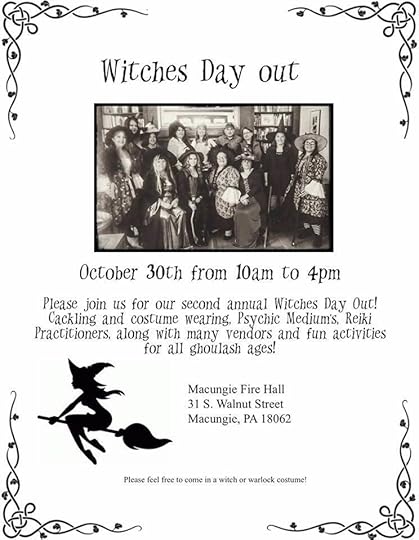
August 13, 2016
Monster Mania Convention Recap
Today at Monster Mania con in Cherry Hill, NJ. Nestor Carbonell (Lost, Bates Motel, Dark Knight) was a pleasure to chat with and although I’d met the legendary Lee Majors (do I need to list his credits?) at a previous convention, I didn’t have the chance to get my photo with him. Corrected that today.
It was an honor to meet these fine gents!
